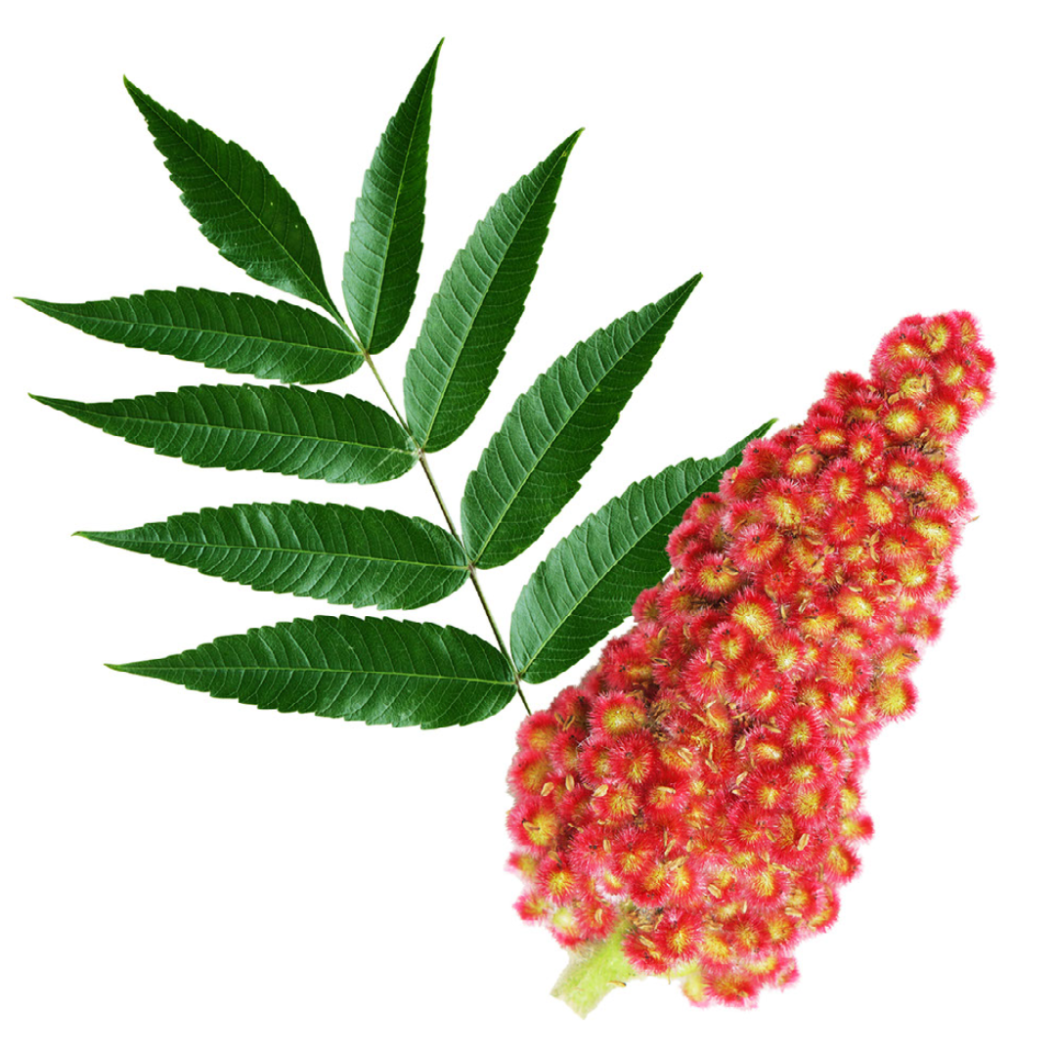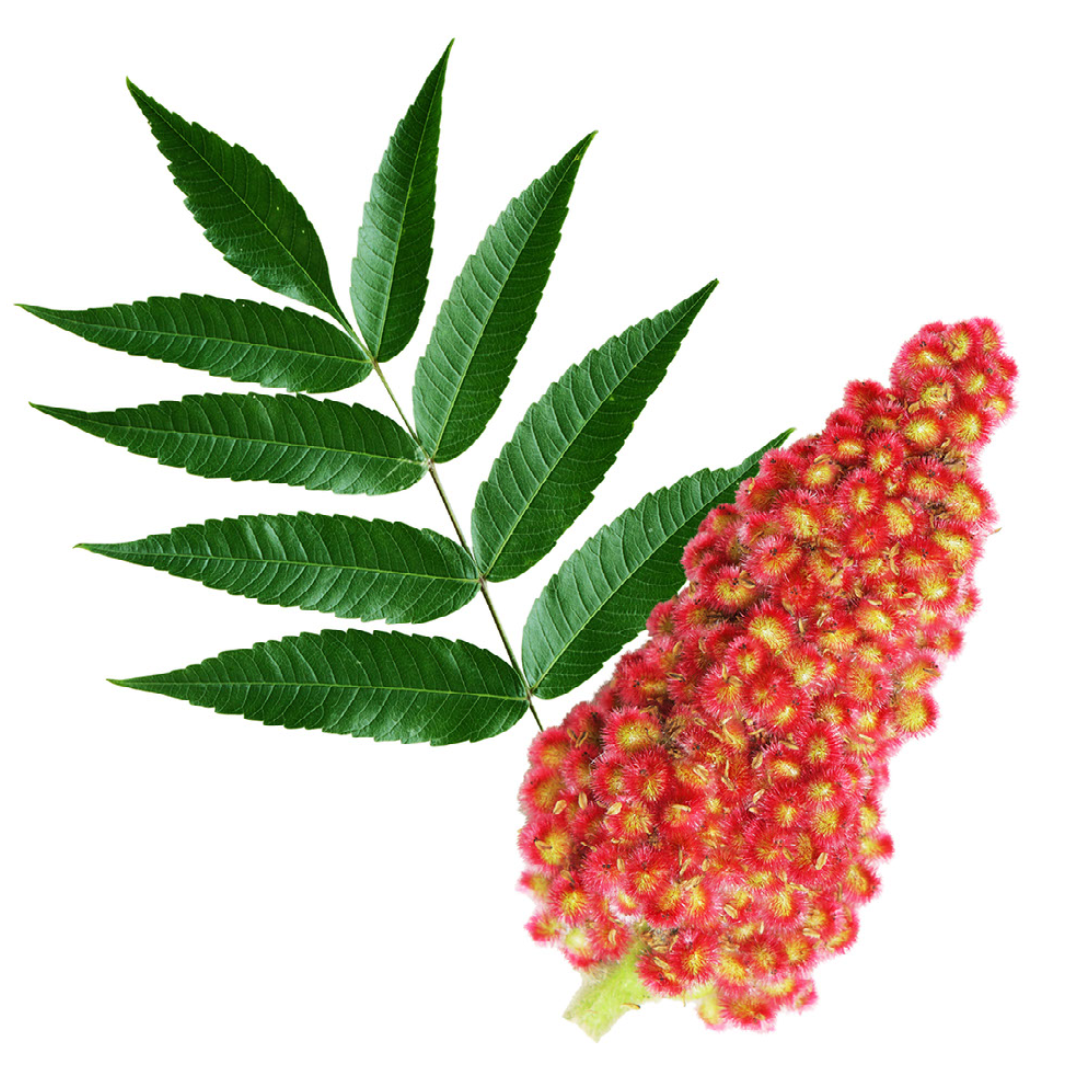
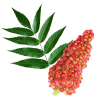

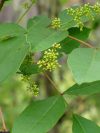
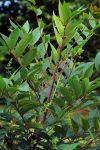
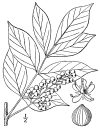
Poison Sumac
DESCRIPTION: Poison sumac is one often forgotten member of the Toxicodendron genus of toxic plants found in North America. Like poison ivy and poison oak, poison sumac's leaves, stems, and berries contain a poisonous oil that can cause a severe allergic reaction. Coming in contact with the plant can cause rash, blisters, and swelling
SCIENTIFIC NAME: Toxicodendron vernix
OTHER NAMES: Thunderwood, Poison Elder, Swamp Sumac
LEAF TYPE: Broadleaf
FLOWERS: Poison sumac has small, greenish-yellow flowers that grow in clusters at the ends of the branches. The flowers are not particularly showy or fragrant, and they may be difficult to see among the leaves of the plant. While the flowers themselves are not poisonous, they can attract insects, which can then spread the toxic oil to other parts of the plant.
LEAVES: Poison sumac has long, pointed leaves with smooth edges. The leaves grow in pairs along the stem, and each leaf has between 7 and 13 leaflets. The leaves can be quite large, up to 12 inches long, and they have a glossy appearance. In the fall, the leaves may turn a reddish or yellowish color before they drop from the plant. It's important to avoid touching the leaves of poison sumac, as they contain a poisonous oil that can cause a severe allergic reaction.
LIFE CYCLE: Perennial
HOW TO IDENTIFY: Poison sumac is a shrub or small tree that can grow up to 20 feet tall. It's most commonly found in wet or swampy areas, such as along the edges of streams or in marshy forests. To quickly identify poison sumac, look for a plant with long, pointed leaves arranged in pairs along the stem. The leaves have smooth edges and between 7 and 13 leaflets. The plant also has greenish-yellow flowers that grow in clusters at the ends of the branches, which may be difficult to see among the leaves. One key feature of poison sumac is that the stems and branches are often reddish in color, which can help distinguish it from other similar-looking plants. It's important to avoid touching or inhaling any part of the plant, as it contains a poisonous oil that can cause a severe allergic reaction.
MECHANICAL CONTROL RECOMMENDATIONS:
1. Manual Removal - More Info
2. Root Removal - More Info
3. Smothering - More Info
4. Mowing - More Info
5. Boiling Water - More Info
6. Mulching - More Info
7. Preventative Measures - More Info
CHEMISTRY RECOMMENDATIONS:
Pre-emergent herbicides:
Prodiamine: This herbicide is effective against a wide range of broadleaf weeds, including poison sumac. It creates a barrier in the soil that prevents the growth of weed seeds.
Oryzalin: Oryzalin is another pre-emergent herbicide that can help control poison sumac by preventing germination and growth of weed seeds.
Isoxaben: While isoxaben is primarily used for broadleaf weed control in ornamental landscapes, it can also be effective against poison sumac. It prevents weed seedlings from establishing themselves.
Dithiopyr: Dithiopyr is a pre-emergent herbicide that offers both pre-emergent and early post-emergent control of certain weeds, including poison sumac.
Benefin: Benefin is effective against various annual broadleaf weeds and grasses. It can help prevent poison sumac from germinating and establishing.
Pendimethalin: Pendimethalin is commonly used to prevent the growth of annual grasses and broadleaf weeds. It can provide some level of control against poison sumac by inhibiting germination.
Trifluralin: Trifluralin is used as a pre-emergent herbicide to control various annual grasses and broadleaf weeds. It can be effective in preventing poison sumac growth from seeds.
Post-emergent herbicides:
Glyphosate: Glyphosate is a non-selective herbicide that effectively kills a wide range of plants, including poison sumac. It's commonly used for large-scale weed control. Care should be taken to avoid damaging desirable plants, as glyphosate can kill any plant it comes into contact with.
Triclopyr: Triclopyr is often used to target woody plants and broadleaf weeds. It is selective to many broadleaf plants and is effective against poison sumac. It can be found in various formulations, including liquids and ready-to-use sprays.
Imazapyr: Imazapyr is another herbicide used for controlling woody plants and invasive species. It's effective against poison sumac and can provide long-lasting control.
2,4-D: This herbicide is commonly used to control broadleaf weeds, including poison sumac. It's often found in combination with other herbicides to increase its effectiveness.
Dicamba: Dicamba is a broadleaf weed killer that can be used to control poison sumac. It's often found in combination products with other active ingredients.
Aminopyralid: Aminopyralid is used to control broadleaf weeds, including poison sumac. It can be found in specialized herbicide products.
Metsulfuron: Metsulfuron is a systemic herbicide that can control a range of woody plants, including poison sumac. It's often used in areas where selective control is desired.
Selective herbicides:
Triclopyr: Triclopyr is known for its effectiveness against many broadleaf plants, including poison sumac. It's often used in formulations designed to target woody plants and can be applied selectively.
Aminopyralid: Aminopyralid is a herbicide that targets broadleaf plants, making it useful for controlling poison sumac. It's often found in specialized herbicide products and is designed to have limited impact on grasses.
Clopyralid: Clopyralid is another selective herbicide for broadleaf plants, and it can provide some level of control over poison sumac. It's often used in lawns and other turf areas.
2,4-D: While 2,4-D is not as selective as some other herbicides, it primarily targets broadleaf plants and can be used with caution to control poison sumac in certain situations.
Dicamba: Dicamba is a selective herbicide for broadleaf plants. It can be used to control poison sumac, although it should be applied carefully to avoid affecting non-target plants.
Metsulfuron: Metsulfuron is a systemic herbicide that can control a range of broadleaf plants, including poison sumac. It's often used in situations where selective control is desired.
Non-Selective herbicides:
Glyphosate: Glyphosate is a widely used non-selective herbicide that effectively kills most plants it comes into contact with. It's commonly available in various formulations, including concentrated liquids and ready-to-use sprays.
Glufosinate: Glufosinate is another non-selective herbicide that can be effective against poison sumac. It's available in both liquid and granular formulations.
Paraquat: Paraquat is a fast-acting non-selective herbicide that works on contact with plant tissues. It's often used for spot treatment of weeds, including poison sumac.
Diquat: Diquat is a non-selective contact herbicide that can be used for quick control of weeds, including poison sumac. It's often used as a desiccant to dry up plant tissues.
Imazapyr: While imazapyr is primarily used for controlling woody plants and invasive species, it's non-selective and can effectively control poison sumac. It's commonly used in areas where broadleaf and woody plant control is needed.
Recommended Prevention
Recommended Control

